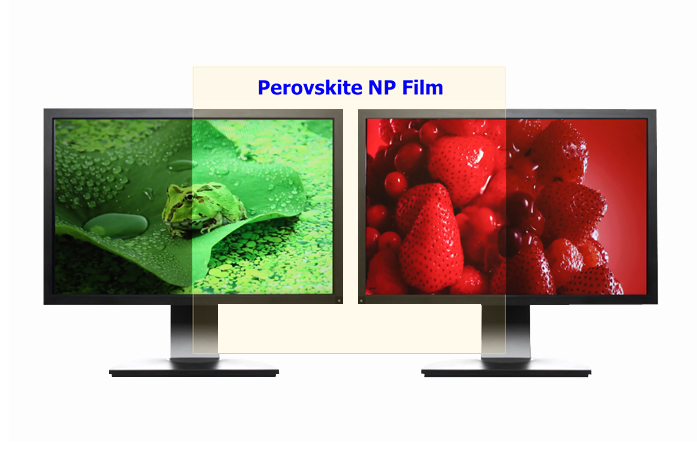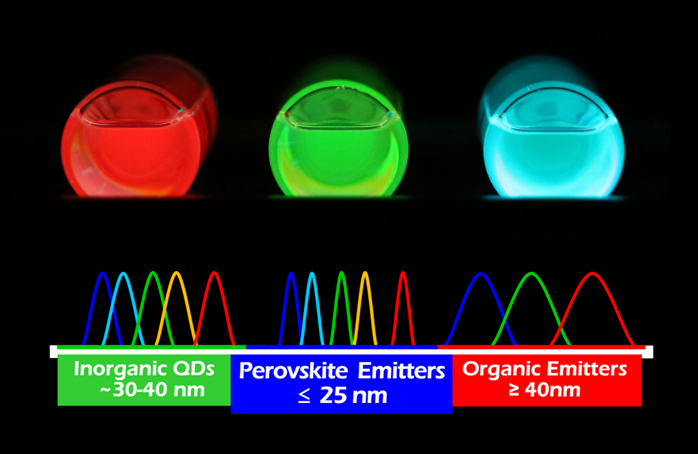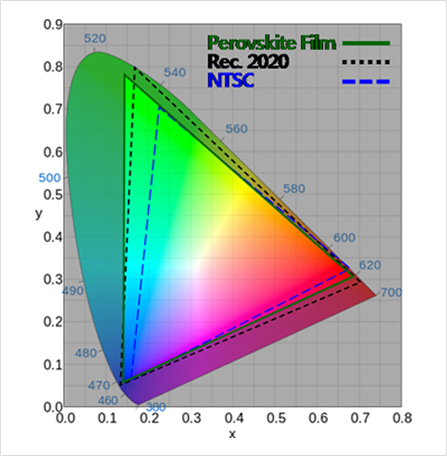PEROVSKITE’S ADVANTAGE
UHD-class display market demands a wide color gamut that perovskite luminescent materials can meet market expectations with high color purity characteristics. The reason why the perovskite emitters have excellent optical properties is that the emission color does not change according to the particle size, unlike the conventional quantum dots, but is determined by the composition ratio of the particles.
Perovskite emitters have a narrower spectral bandwidth (≤ 25 nm) than those of conventional inorganic quantum dots (~30-40 nm) and organic emitters(≥ 40 nm). The Even without a outer shell layer, perovskite emitters have a high photoluminescence quantum efficiency and a higher absorption and higher brightness than conventional quantum dots with the same concentration. Customer can experience the display image vividly with customer’s eyes as the perovskite emitters have the natural color property when applied to the displays. At the same time, the perovskite emitters are a material and technology that can meet the high color space standards (REC. 2020) required for UHD.
Compared to existing quantum dots and organic emitters, perovskite emitters use a low-cost precursor, have a short synthesis time, can be synthesized at room temperature, and is synthesized according to the composition ratio, resulting in high productivity.
In recent years, perovskite emitters are emerging as a next-generation luminescent material with the potential for faster access to industrialization, based on the development strategy obtained in the commercialization process of organic emitters and inorganic quantum dots.

NATURAL COLOR
WITH PEROVSITE DISPLAY
Perovskite emitters can absorb light in a wide range and convert it into pure color at a specific wavelength, and can emit narrow-band light in a wide visible light range to increase the color reproduction of the display.
RoHS APPROVED
Perovskite emitters is Cd-free nanoparticles that satisfies RoHS (Restriction of Hazardous Substances) regulations so that consumers can use it without severe restriction.


PRICE COMPETITIVENESS
By changing the chemical composition of perovskite nanoparticles, perovskite emitters can be synthesized to realize the entire range of visible light and the emission wavelength can be tuned easily. Because the a short synthesis process is possible at room temperature, they can be mass-produced at a lower cost than existing quantum dots and organic emitters.
LOW POWER
Perovskite emitters not only absorb a wide wavelength range of lights, but also have higher absorptance than that of conventional quantum dots, and have high luminescent efficiency. Even with a small amount of perovskite emitters, even superior brightness can be achieved to conventional quantum dots, saving energy in displays and lights.



